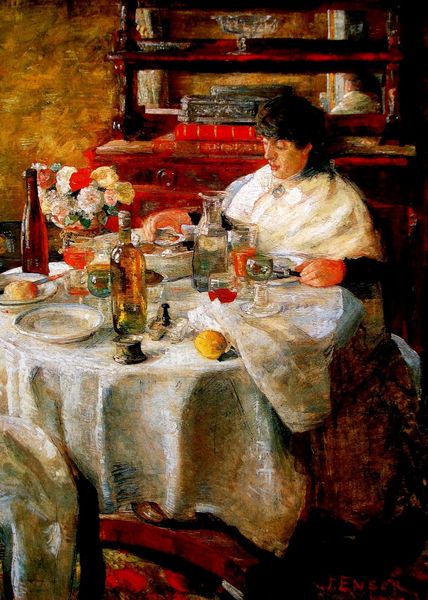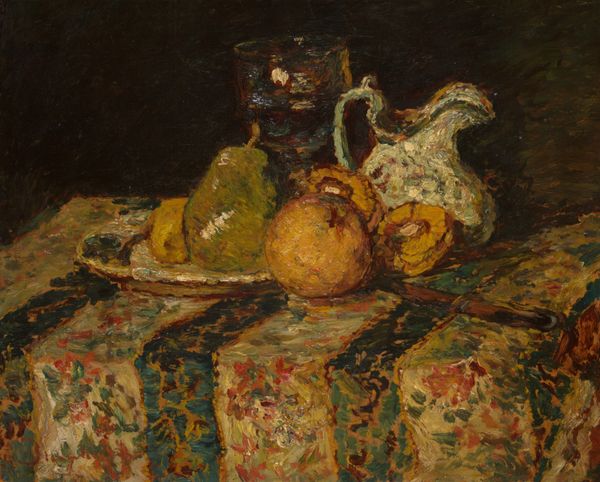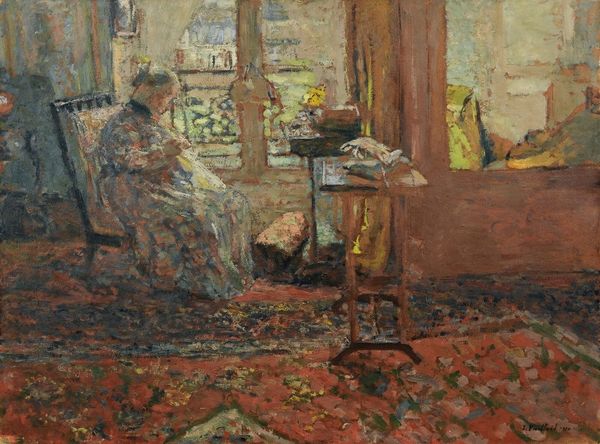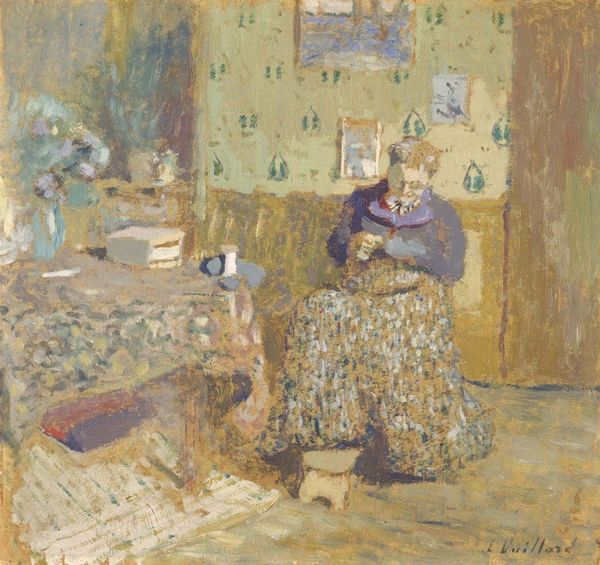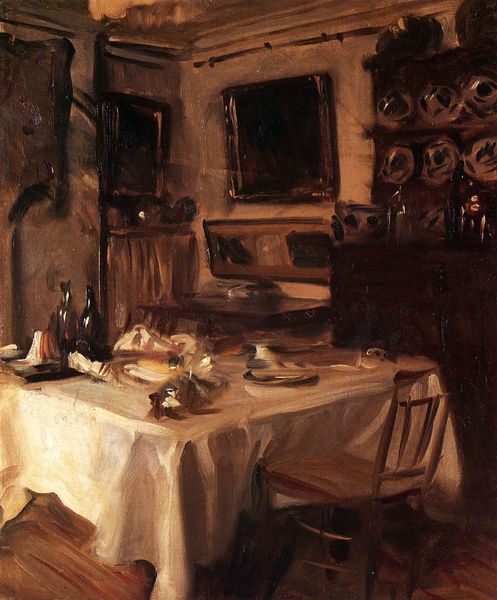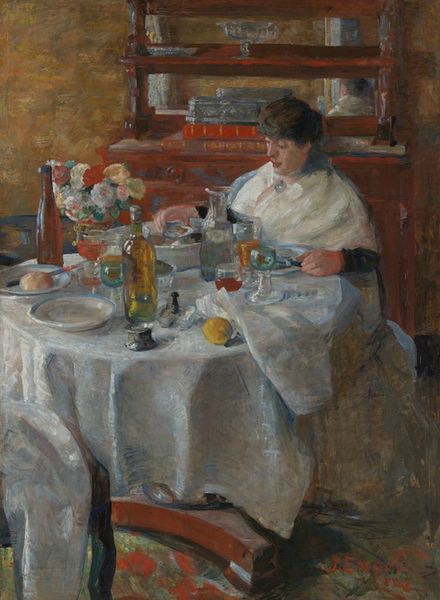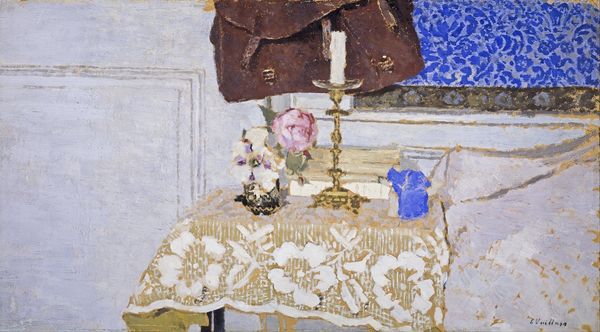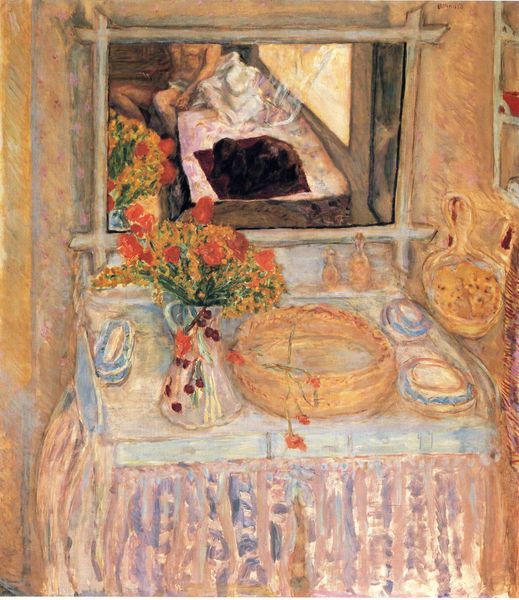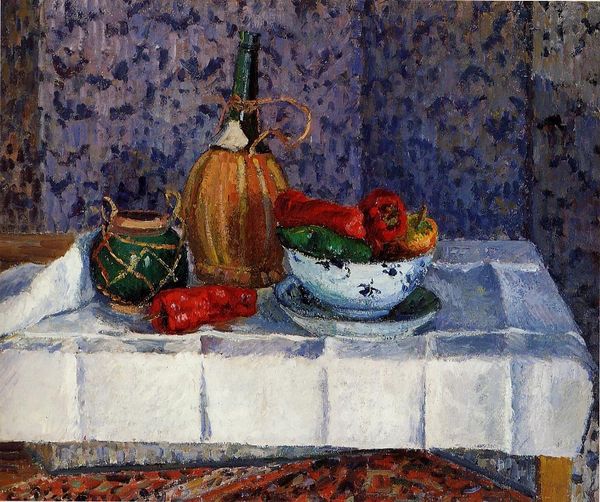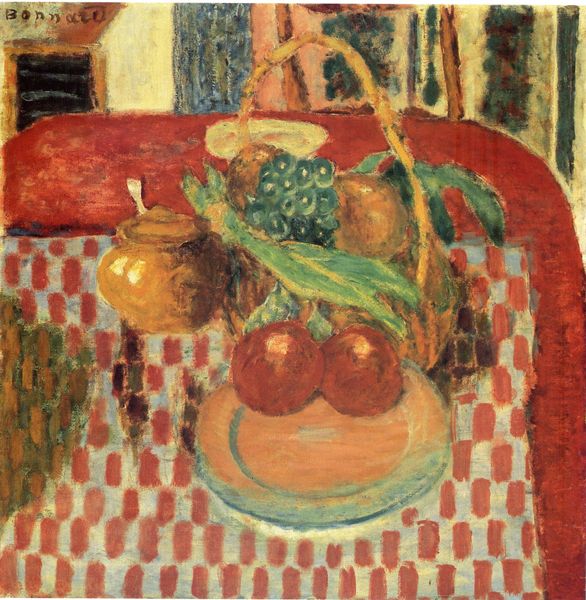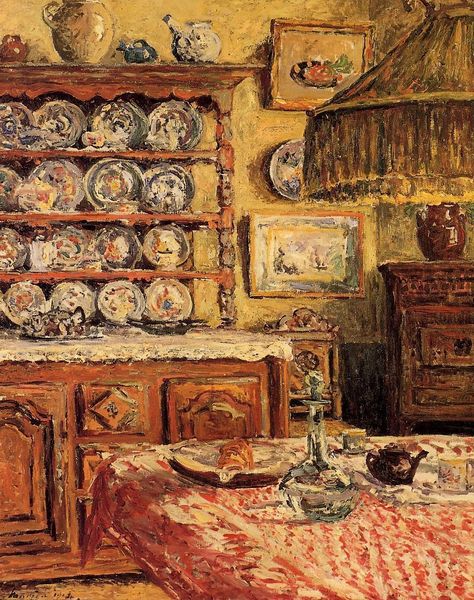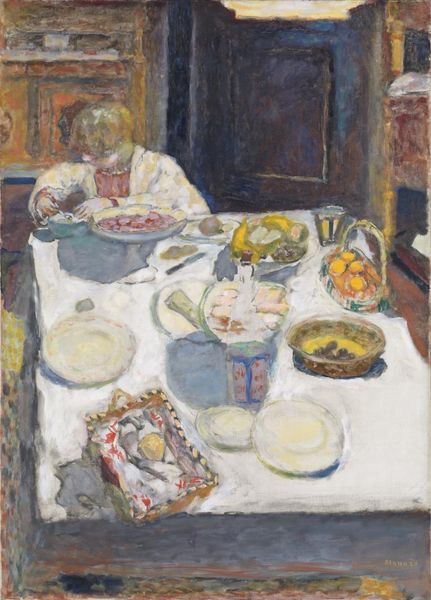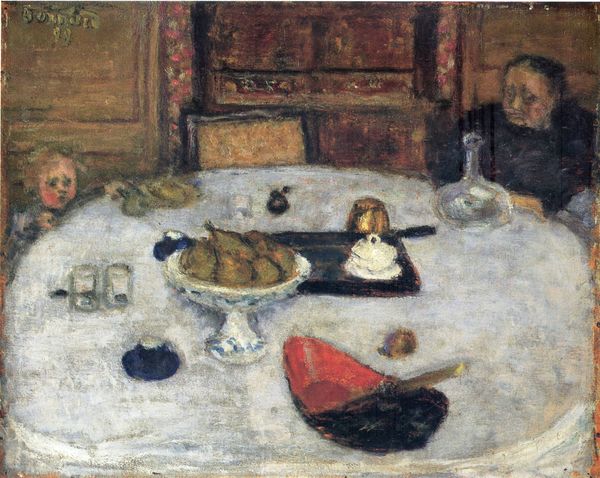
painting, oil-paint
#
table
#
painting
#
oil-paint
#
furniture
#
oil painting
#
intimism
#
genre-painting
#
post-impressionism
Dimensions: 37.5 x 61 cm
Copyright: Public domain
Curator: This is Édouard Vuillard's "The Table Setting," painted in 1903. Editor: My first impression is warmth and quiet. There’s a stillness here, a sort of domestic serenity rendered in a rich, almost dizzying pattern. Curator: Absolutely. Vuillard was a master of Intimism, capturing those quiet, private moments of bourgeois life. The objects in the room are soft indicators of what might occur daily. We might examine it for clues to societal roles through everyday settings. Editor: And the objects themselves speak volumes. The heavily patterned tablecloth seems almost to obscure the scene, blurring the distinction between the domestic space and what might be termed a stage for performing gendered expectations of early 20th century France. Curator: Look closer—even the wallpaper participates! I think we can analyze it symbolically; notice how each object depicted is framed within its own set of patterns. These create both literal and psychological textures. We read safety, enclosure. Editor: But I wonder, is it truly "safe?" I feel a certain tension in that obscuring pattern, suggesting not just safety, but potentially also claustrophobia, especially when we consider how narrowly women's roles were defined within this era. There is a flattening that renders any kind of reading a kind of labor. Curator: An interesting take. The use of oil on canvas lends a hazy, dreamlike quality; you could almost lose yourself in the patterns, which might suggest losing one's personal definition. But that same haziness invites multiple meanings. Editor: Agreed. It becomes more potent then—this scene operating as both an idealized portrait and a veiled critique of domestic life. A certain unease creeps into an apparently unremarkable everyday scene. Curator: Ultimately, it feels that way because it represents an intersection of inner life and physical space, shaped by cultural forces. We see what can be when we view the everyday symbolic markers of one's lived world. Editor: And in questioning what lies beneath those everyday scenes, we see echoes in our present. That potential subversion is powerful indeed.
Comments
No comments
Be the first to comment and join the conversation on the ultimate creative platform.
